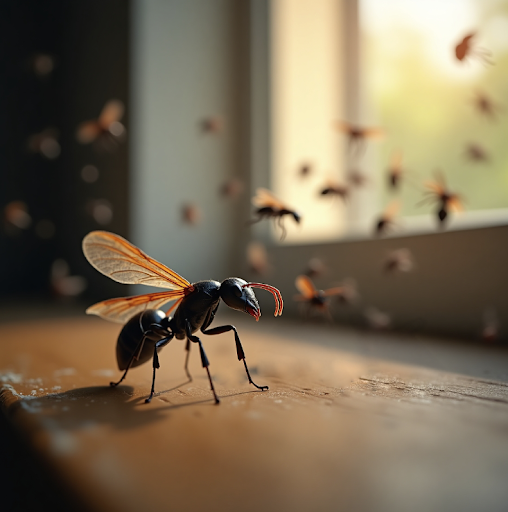Earwigs are just plain nasty looking, to put it bluntly!
But there’s nothing blunt about those mean-looking, sharp
pincers!
Earwigs are not as dangerous to humans as you may think: they are not known to spread disease, and they’ll use those forceps to pinch you only if you try to handle them. They can also spray a foul-smelling fluid. Certainly not the pest you want to run into at night – or to multiply in your home!
Once earwigs enter your home, they’ll hide during the day in dark, moist, cool areas such as cracks and crevices around baseboards and similar locations, as well as in potted plants and cut flowers. Then they become active at night. Some earwigs have wings (though they’re hard to see) and they will fly occasionally, but mostly they crawl (and fast!) to get around. They’re attracted to light and need moisture to survive.
Although earwigs typically hide and lay eggs in an outdoor environment (under tree bark, in mulch, under rocks and stones and debris) they will enter your home after dark if they see light through cracks and crevices in your foundation or at doorways or windows.
Once indoors, they can become an unsightly nuisance, and in some cases may reproduce in your home.
At Adam’s we feel the more you know about pests and their behaviors, the easier it is for you to identify the pest and often prevent prevent them from entering your home. Of course, if you do have a pest problem, it’s always best to call a professional … getting rid of pests is often not easy, and using insectides or other treatments should be left up to certified, trained professionals.
To help you, here are some Q&As relating to earwigs –
Q. What do they feed on?
A. They feed on a variety of vegetables and soft fruit. Their diet may also include small insects and other arthropods. Earwigs are omnivores, meaning they feed on plant and animal materials. Some earwigs are predators, feeding on small bugs. A few species of earwigs will feed off of “hosts” such as small rodents and bats (feeding on skin parts and fungus growth on the host’s body.)
Q. Are earwigs harmful?
A. Earwigs are not harmful. However, if handled, they will defend themselves by spraying foul-smelling fluid and / or by pinching using their forceps, which both males and females possess. Earwigs do not have poisonous glands, so there is no danger associated with an earwig pinch.
Q. How do I identify earwigs?
A. Earwigs are elongated, flattened insects, small to medium-sized (4-24 mm long.) They can range from light red-brown to black in color and have pincer-like appendages on the end of the abdomen. The female’s pincers are straight-sided, whereas male pincers are strongly curved and large. They are either winged or wingless. If wings are present, the front wings are leathery, hard, short and veinless, and meet in the straight line down the back. The hind wings are membranous, rounded and folded under the front wings. Nymphs (immature) resemble adults, but they are white to olive-green in color and lack wings.
Q. How do I manage earwigs without using chemicals?
A. Long-term management of earwigs can be achieved by removing / altering their daytime shelter (boards, stones, paper, mulch, etc.) and sealing all possible entryways (cracks and crevices in the outside of the house, gaps under doors, etc.). Since earwigs are attracted to light and need moisture, reducing lighting and damp conditions around doors, windows and other potential entry sites will help keep them away. Changing landscaping by creating a clean and dry border directly around the foundation wall can reduce the number of earwigs around the structure.
Q. If that doesn’t work, what next?
A. An exterior treatment by a professional using proven residual microencapsulated pesticide can be applied around the perimeter areas to prevent earwigs from entering your home. If you do have in infestation indoors, they can be controlled by certified, trained pest control experts who will use proven residual insecticide treatments: applying spot, crack and crevice applications along baseboards, beneath cabinets, along doors and windowsills and other hiding places are some of the methods. Remember that if outdoor habitats are not modified, indoor pesticide applications would be a short-term solution due to new earwig entry from outdoors.
So, a call to Adam’s is a wise move if you have an earwig problem!




